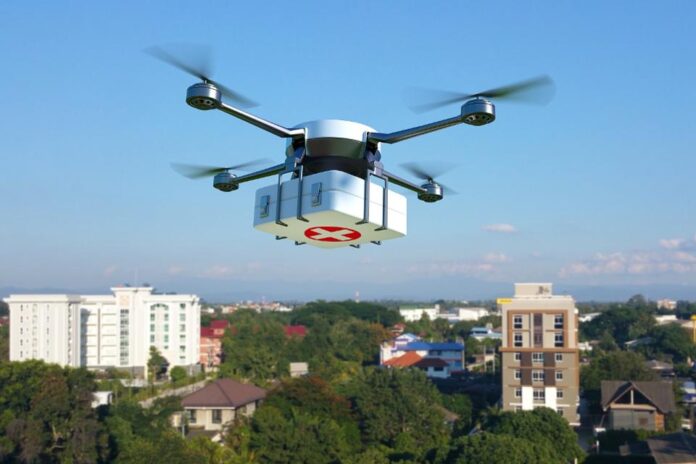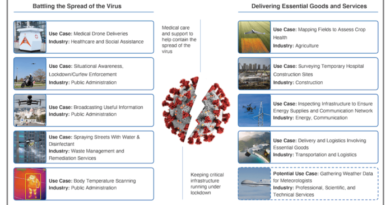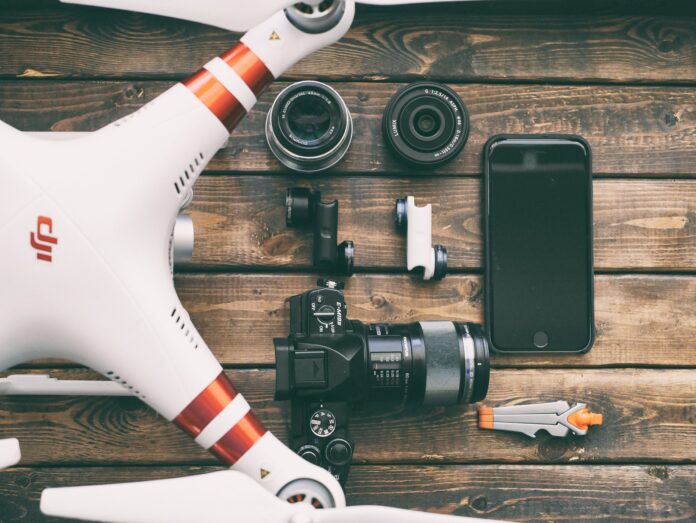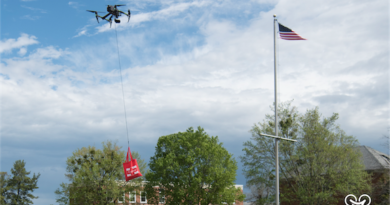Will Pandemic Drones Help With the Detection of COVID-19 Cases?
Guest Post by Emily Folk
The global outbreak of the new coronavirus has forced people everywhere to adjust their lifestyles, companies to revisit their business models and innovators to find new medical and technological methods for containing the virus.
Drones are already a world-changing technology, but they may have another role to play as we grapple with and attempt to recover from COVID-19.
What’s the Role of Drones in Detecting COVID-19 Cases?
China was ground zero for the coronavirus outbreak, as well as one of the first nations to begin using drones to deliver food and critical protective gear and medical supplies. This had the benefit of slashing transit times for important resources and helping health care officials keep the rate of infection down.
As other countries began feeling the effects of the virus and making changes to rules governing travel and public gatherings, drones took on additional duties, including enforcement.
Australia, China and Spain have all turned drones toward the task of enforcing social distancing in public spaces like parks, sidewalks and beaches. In a now-famous viral video, a drone in China approached an elderly woman on the street and ordered her to put on a face mask.
It turns out that drones may have a role to play in detection, as well.
Researchers at the University of South Australia, in conjunction with a Canadian drone company called Draganfly and a health monitoring company called Vital Intelligence, have developed what they call a “pandemic drone.” It uses machine vision to monitor citizens from a distance.
Equipped with sensors and sophisticated image processing algorithms, these drones measure vital signs such as respiratory and heart rates, as well as internal temperatures, to identify infected individuals. They also interdict people who sneeze or cough carelessly in public or fail to wear personal protective gear.
Other applications including searching for survivors after natural disasters and detecting falls among the elderly population.
The group of researchers hopes to have the project deployed in public spaces within six months, according to professor Javaan Chahl.
As the COVID-19 epidemic unfolds, the team is fast-tracking their project to do their part in what Chahl calls “the biggest health catastrophe the world has experienced in the past 100 years.”
Is There a Downside to Using Drones to Contain the Pandemic?
When they’re used for benign and practical purposes, drones are a boon to human productivity and efficiency. They make it faster, safer and easier to inspect and maintain infrastructure, agricultural sites, forestry projects, mines, natural gas and oil fields, and many other industrial locations.
What’s different about pandemic drones?
Once the technology is mature enough for deployment, expect Australia and other countries to deploy them almost immediately. Areas targeted for scrutiny include city squares, workplaces, convention centers, cruise ships, borders, power plants and other infrastructure facilities. They may start patrolling at-risk populations in places like nursing homes, too.
Any technology this consequential and potentially invasive isn’t without its drawbacks and skeptics, however. A lot of the worry may be justified, given the fact that authoritarianism appears to be on the rise around the world. It’s been empowered by a host of easily misused technologies like facial recognition and state and corporate surveillance.
Coronavirus didn’t create authoritarian leanings in major countries, but it has the potential to broaden the reach and consolidate the power of nations with autocratic leanings. Some fear that the changes we’re seeing in the name of public health might become permanent once the crisis has abated.
Russia is using facial recognition and other privacy-eroding technology to detect and contain coronavirus cases. Leaders in Britain, Hungary, Chile and elsewhere are using the outbreak to seize unilateral emergency powers such as silencing protestors, detaining citizens and closing borders. Some of these leaders could be slow to relinquish these powers once the pandemic subsides.
COVID-19 could permanently normalize the use of drones, surveillance tech and facial recognition. These technologies are already under scrutiny from concerned citizens, progressive politicians, and social justice and privacy advocacy groups.
China’s “social credit system” has already drawn ire for invasive behavioral monitoring tactics. Drones would also be a welcome addition to the United States’ militarized police force, which regularly disperses and even assaults peaceful protestors at sites like the Dakota Access Pipeline. If the Trump administration has its way, participation in pipeline protests could soon carry a prison sentence of up to 20 years.
Deploying drones among the public in substantially greater numbers will have an additional chilling effect on public expressions of political dissatisfaction. In the right hands, drones could do a lot of good in helping keep the public safe and healthy. It’s up to the voting public whether these emergency powers and technologies outlive the disaster they were designed to confront.
Author Bio: Emily is a green tech writer who covers topics in renewable energy and sustainable design. You can read more of her work on her blog, Conservation Folks.



